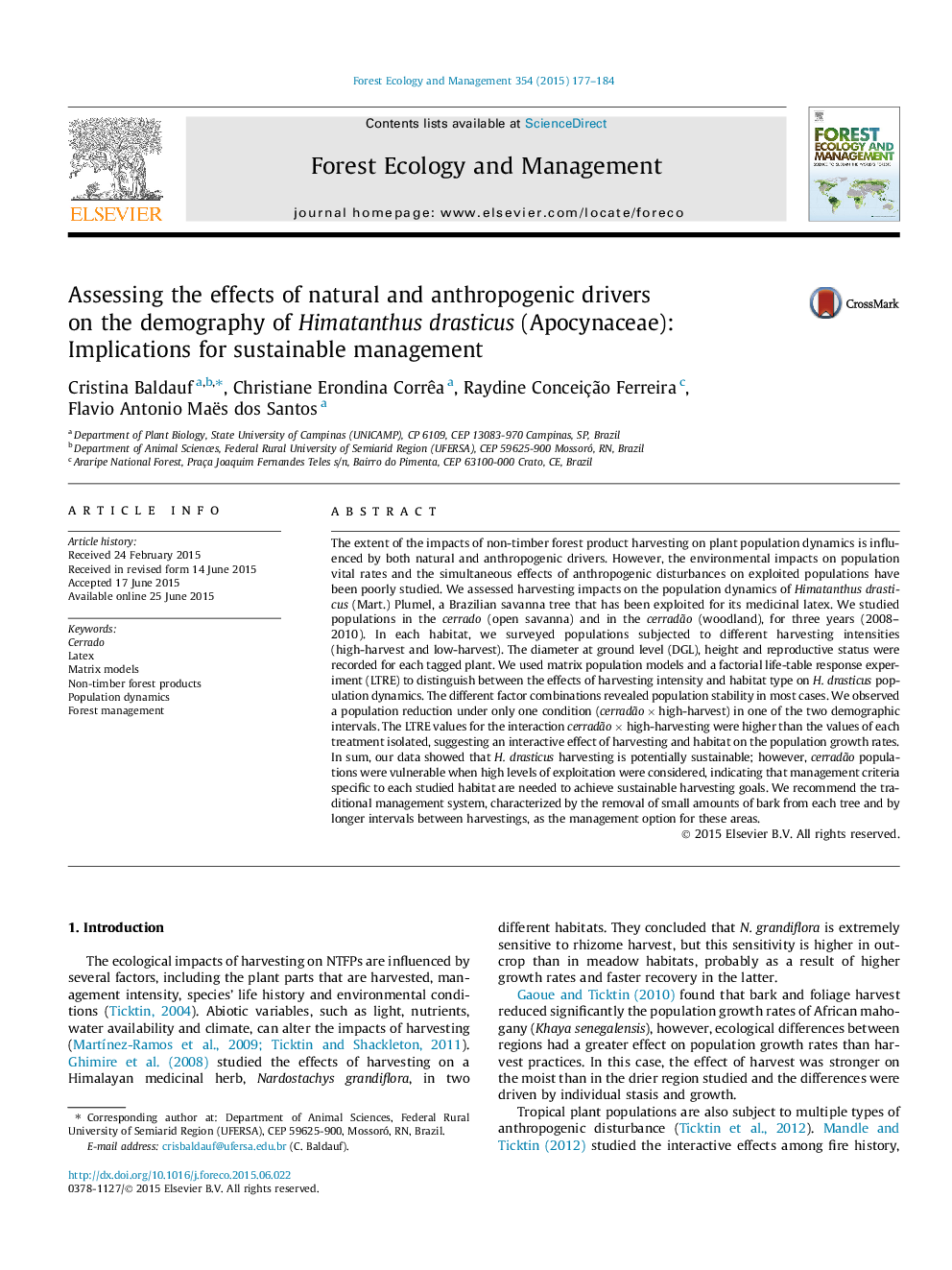| کد مقاله | کد نشریه | سال انتشار | مقاله انگلیسی | نسخه تمام متن |
|---|---|---|---|---|
| 86148 | 159168 | 2015 | 8 صفحه PDF | دانلود رایگان |

• We assessed the effects of harvesting on the population dynamics of H. drasticus.
• We used matrix population models and a factorial life-table response experiment.
• H. drasticus harvesting is potentially sustainable.
The extent of the impacts of non-timber forest product harvesting on plant population dynamics is influenced by both natural and anthropogenic drivers. However, the environmental impacts on population vital rates and the simultaneous effects of anthropogenic disturbances on exploited populations have been poorly studied. We assessed harvesting impacts on the population dynamics of Himatanthus drasticus (Mart.) Plumel, a Brazilian savanna tree that has been exploited for its medicinal latex. We studied populations in the cerrado (open savanna) and in the cerradão (woodland), for three years (2008–2010). In each habitat, we surveyed populations subjected to different harvesting intensities (high-harvest and low-harvest). The diameter at ground level (DGL), height and reproductive status were recorded for each tagged plant. We used matrix population models and a factorial life-table response experiment (LTRE) to distinguish between the effects of harvesting intensity and habitat type on H. drasticus population dynamics. The different factor combinations revealed population stability in most cases. We observed a population reduction under only one condition (cerradão × high-harvest) in one of the two demographic intervals. The LTRE values for the interaction cerradão × high-harvesting were higher than the values of each treatment isolated, suggesting an interactive effect of harvesting and habitat on the population growth rates. In sum, our data showed that H. drasticus harvesting is potentially sustainable; however, cerradão populations were vulnerable when high levels of exploitation were considered, indicating that management criteria specific to each studied habitat are needed to achieve sustainable harvesting goals. We recommend the traditional management system, characterized by the removal of small amounts of bark from each tree and by longer intervals between harvestings, as the management option for these areas.
Journal: Forest Ecology and Management - Volume 354, 15 October 2015, Pages 177–184